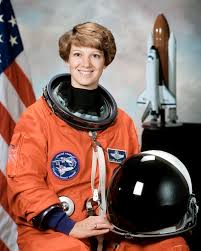Eileen Collins: A Trailblazer in Space Exploration

Introduction
Eileen Collins is celebrated as one of the leading figures in space exploration, not only for her pioneering role as the first female commander of a Space Shuttle but also for her extensive contributions to NASA and the field of aviation. As more women take on key roles in STEM (science, technology, engineering, and mathematics), Collins’s achievements serve as a significant source of inspiration and motivation, particularly for young girls aspiring to enter these fields.
Early Life and Education
Born on November 19, 1956, in Elmira, New York, Eileen Collins displayed an early passion for flying. She pursued a degree in mathematics and economics from Syracuse University, followed by a master’s degree in aeronautical science from the University of Texas at Austin. Her background laid the foundation for a successful career in the United States Air Force, where she became one of the first women to be a fighter pilot and to teach at the Air Force Test Pilot School.
NASA Career
Collins joined NASA in 1990 as an astronaut. Her first flight was aboard the Space Shuttle Discovery in 1995, where she served as the first female pilot of a Space Shuttle mission, STS-63. Her most notable achievement came on July 23, 1999, when she commanded the STS-93 mission, making her the first woman to head a Space Shuttle flight. This mission successfully deployed the Chandra X-ray Observatory, which has contributed greatly to our understanding of the universe.
Post-NASA Contributions
After retiring from NASA in 2006, Collins continued to be an influential figure in aviation and education. She served as a role model through her work with various organisations that promote space exploration and science education. Collins has also been a prominent speaker at numerous conferences and events, sharing her experiences and encouraging the next generation to pursue careers in aerospace and STEM fields.
Conclusion
Eileen Collins’s legacy as a pioneer and leader exemplifies the critical role of women in space exploration. Her achievements have opened doors for countless women in both aviation and science. As we continue to see strides towards gender equality in STEM, Collins’s story remains a beacon of possibility, inspiring future generations to look to the stars and embark on their own journeys of exploration and innovation.
